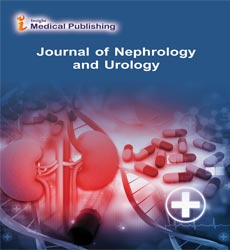Childhood chronic kidney disease: Experience of pediatric department
Maalej B *
University of London, UK
Received Date: 2022-08-03 | Accepted Date: 2022-08-05 | Published Date: 2022-08-30
Abstract
Introduction: Chronic renal failure (CRF) for children is a major problem of public health both in poor and developed countries. This study aimed to investigate the diagnosis and the management options of CRF for children. Patients and methods: This study retrospectively evaluated patients who had Chronic Kidney Disease in the department of pediatric emergency and reanimation in Hedi Chaker hospital in Sfax between 2005 and 2016. Results: Over 11 year’s period, we diagnosed and managed 41 children with CRF. The estimated incidence of CRF is 4.7 new cases per million-child population per year. Parental consanguinity was found in 16 patients (39%). Family history with kidney disease was noted in 6 cases (14.6%). Malformations of the urinary tract were observed in 24 patients (58.5%). Other causes are divided into hereditary kidney disease in 8 patients (19.5%) predominated by primary hyperoxaluria, in vascular nephropathy who were objectified in 5 patients (12%) whereas glomerulopathy were represented in 3 cases (7.5%). No etiology was found in 1 patient. Over the 11 years 22 patients (54%) had renal replacement therapy (RRT). Peritoneal dialysis (PD) was practiced in over then 90% of patients. A passage from peritoneal dialysis to hemodialysis was done in 8 patients. Only four patients had a kidney transplant. The rate of overall mortality in our series was 40% with median of follow-up in 54 months. Conclusion: In Tunisia and in all Low source country children with CRF must be treated by pediatric nephrologists and the pediatric renal transplantation must be developed.
Open Access Journals
- Aquaculture & Veterinary Science
- Chemistry & Chemical Sciences
- Clinical Sciences
- Engineering
- General Science
- Genetics & Molecular Biology
- Health Care & Nursing
- Immunology & Microbiology
- Materials Science
- Mathematics & Physics
- Medical Sciences
- Neurology & Psychiatry
- Oncology & Cancer Science
- Pharmaceutical Sciences
